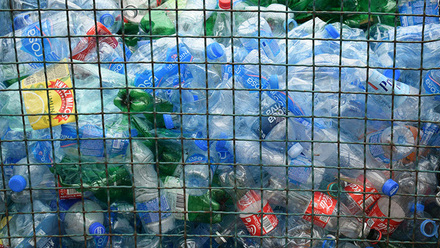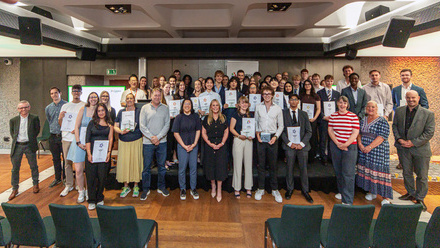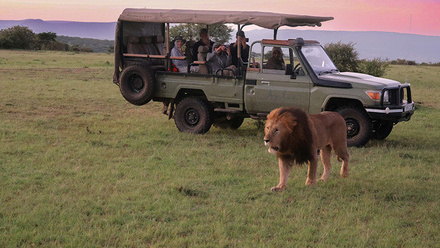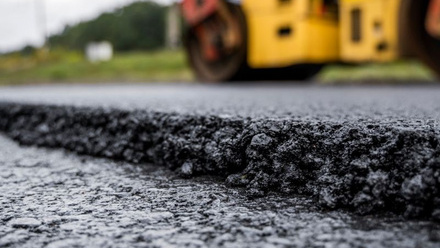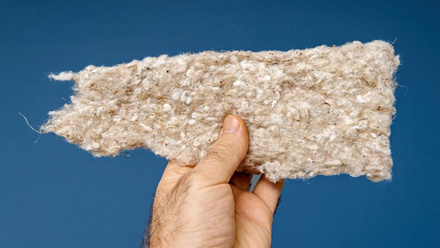Reaching new heights - materials scientist turns space explorer
Materials scientist Marta Ferran-Marqués, of Cranfield University, UK, is one of the all-female crew members set to visit the Mars Desert Research Station in Utah, USA. She chats to Andrea Gaini about venturing into space exploration, inspiring young women and her dream of becoming an astronaut.
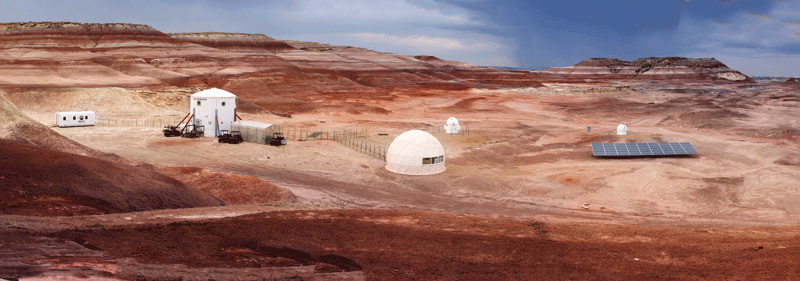
When the all-female crew visit to the Mars Desert Research Station (MDRS) in Utah, USA, was first announced in June 2020, one of the aims was to fill ‘the data gap on women’s performance in space exploration’.
Marta Ferran-Marqués, a PhD student in manufacturing luminescent coatings for ultra-high temperature measurements at Cranfield University, UK, is one of the women involved in the mission.
She says, ‘The numbers of women are still very low. There was a European Space Agency (ESA) astronaut application [in 2021], and out of 22,600 applicants, I believe only 5,400 were women. So, with our project we're sharing our experience and our enthusiasm, hoping to encourage more girls to become space scientists.’
Six female engineers, geologists and scientists, all under 30, are set to enter the simulation centre later this year for a two-week mission living in Mars-like conditions. This includes wearing astronaut spacesuits when they venture outside for extra-vehicular activity, dealing with delays in messaging transmission and following a strict diet as they would in space.
The desert area in Utah mimics the Martian landscape, and the station itself is said to be similar to one that could be built on Mars (see box-out).
During their time at the research station, Marta and the rest of the crew will be carrying out tests and trials on equipment. One of Marta’s projects, developed with Cranfield University, is to test smart electrochromic windows programmed to switch on when there is sufficient light to collect energy and then turn off to save energy.
‘For this project, we’re going to be bringing three types of electrochromic windows – one which will be constantly on, another which is turned on during daylight, and finally, a smart electrochromic window that will detect when there’s enough sunlight and turn on by itself.’
A nano-start
Marta’s professional trajectory towards space science started in Spain, where she was raised in Reus, a couple of hours’ drive from Barcelona.
She studied at a Technological High School in Spain specialising in Biology, Maths, Physics, but by the end of her studies she was set on going into architecture.
‘My mum was not really happy about that because when I finished High School, Spain was going through an economic crisis and my mum thought I would study for five years and then not be able to find a job,’ she explains.
But things took a different turn when Marta visited a nanotechnology exhibition in Reus, organised by the La Caixa foundation. She recollects falling in love with ‘all the little robots’ and feeling inspired to pursue this route.
‘I thought, wow, that's very interesting. [And] then, I found out that Barcelona was the only university in Europe, at the time, hosting a Bachelor’s degree in Nanotechnology. And that's something that really sparked my interest because I'm a very ambitious person. I thought, I'm going to be one of the first people studying nanotechnology.’
From there, the seeds were planted for an interest in using nanotechnology for space exploration, which led her to apply for a Master’s degree in Aerospace Materials at Cranfield University. ‘After I finished [my] Master’s, I was offered an industrial PhD at Cranfield University and working as a Materials Engineer for Sensor Coatings Systems (SCS).’
SCS in Dagenham East, UK, is developing a coating to determine the maximum temperature a gas turbine engine is operating at. The material is developed so that once exposed to increasingly higher temperatures, its structure and luminescence will gradually change after returning to room temperature.
If applied as a coating over a component surface, then differences in the regions based on exposure to temperatures can be noticed, meaning the material structure, and phosphorescent lifetime decay, will then locally and non-reversibly change. These changes in the detected lifetime decay can therefore be linked to the temperature experienced by the material.
The phosphorescent pigments – which enable the temperature memory effect – are made of oxide ceramics manufactured with a very low concentration of phosphorescent ions, which provide the luminescence.
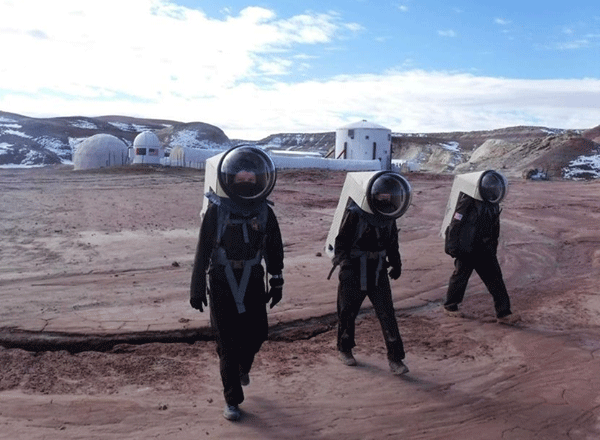
During her time at Cranfield University, Marta’s interest in becoming an astronaut kept growing as she explored more about the materials applications. Until one day, an opportunity came up to train as an astronaut.
Marta explains that through LinkedIn she discovered a programme to train astronauts that could one day be hired to work for private companies in the space industry. She says, ‘At the moment you can only become an astronaut through a government programme, but this could change in the future and so this company, Advancing X, wanted to train astronauts.’
While taking part in the online competition, where applicants had to post a video explaining why they wanted to become astronauts, Marta’s contribution went viral – reaching around 500,000 views on LinkedIn. Although she didn’t continue with the application, she was contacted by Laurène Delsupexhe, a Consultant Engineer who helped create the WoMars project, an initiative that seeks to coordinate all-female astronaut analogue missions, conduct scientific research, and provide women with hands-on experience in space analogues and extreme environments.
Delsupexhe spoke to Marta about the possibility of forming a group of six women to go to the MDRS in the deserts of Utah.
Soon after, the WoMars crew came together with Marta onboard. This was a team of aspiring space explorers dedicated to achieving inclusive Lunar and Martian settlements. The scope of the group, however, has now extended beyond the initial MDRS expedition.
Marta explains, ‘Right now, we’ve turned WoMars into an association. So that it's not only going to be going into different missions, like the one at MDRS, but also into schools to encourage young girls and say, ‘Hey, you also can be an engineer!’’
Marta has also started a TikTok account to promote science with the younger audience. She says, ‘In my spare time, I tutor kids and I have one girl that is six years old who wants to learn Chemistry as she's not yet doing much Chemistry at school.
‘She just got a book about Chemistry and the parents said, ‘We can't explain this to her.’ So, we started these online sessions where we do science experiments with whatever you can find in the kitchen. And she really inspired me because she's improving a lot. And I decided to start a TikTok account with all the science videos that I do.’
Bringing Mars within reach
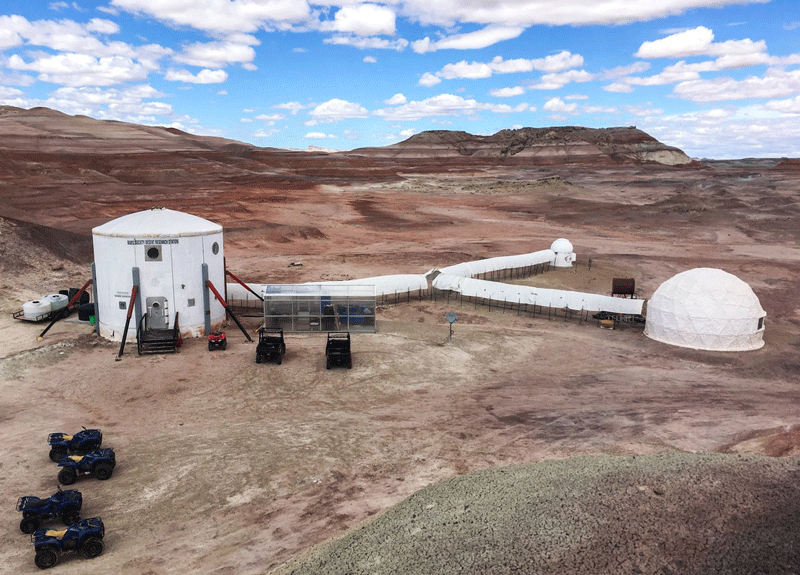
The Mars Desert Research Station (MDRS) is a space analogue facility in Utah, USA, owned by the Mars Society, which supports Earth-based research in pursuit of the technology, operations and science required for human space exploration.
Mars analogues are, in fact, locations on Earth where some environmental conditions, geological features, biological attributes, or combinations thereof may have similarities to those thought to be encountered on Mars, either at present or earlier in that planet’s history. Studying such sites aims to uncover new insights into the nature and evolution of Mars, the Earth and life.
In these Mars-like environments, field exploration operations are conducted in the same style and under many of the constraints as they would appear on the Red Planet.
This offers the opportunity to carry out field research in a variety of key scientific and engineering disciplines that will help prepare humans for exploration of the planet. Such research is vital, for example, to subject a spacesuit prototype to two months of real field work. Similarly, psychological studies of human factors, including isolation and habitat architecture, are also only useful if the crew being studied is attempting to do real work.
The MDRS was first constructed in 2001 as part of the Mars Analog Research Station (MARS) programme and its campus comprises six structures that can house seven crew members at one time.
The main habitat – also known as Hab – is a two-storey, 8m in diameter cylindrical building. A lower deck houses the extra-vehicular activity prep room with the spacesuit simulators, an exterior airlock, a shower room, toilet room and a rear airlock leading to tunnels, which access other structures. While the upper deck forms the living quarters.
There are two observatories on the campus. The Robotic Observatory is home to the 35.5cm Celestron Schmidt-Cassegrain telescope on a CGE pro equatorial mount. Attached is a 10cm refractor, which is used as a guide scope, and they both deploy a wide array of cameras for astronomical imaging. The telescope is housed in a 19cm automated dome that can be controlled onsite or from the habitat module. The Musk Observatory, formerly the only observatory on campus, has meanwhile been converted into a solar observatory for use by crews.
The research station hosts an eight-month field season for professional scientists and engineers as well as college students of all levels, in training for human operations specifically on Mars. The relative isolation of the facility allows for rigorous field studies as well as human factors research.
Most crews carry out their mission under the constraints of a simulated Mars mission. Most missions are two to three weeks in duration, although the site has supported longer missions as well.
The campus is surrounded by a landscape that is a geologic Mars analogue.
Source: Mars Desert Research Station
On a mission
For Marta, the importance of WoMars lies in setting an example for young women.
‘I think when you're a little girl, you do not see a lot of women go to school to study Engineering or become pilots.
‘For me, my brother was my inspiration there. He did Engineering, and I always wanted to follow his path. But I think this is a problem that we don't see a lot of women when we are young, doing things like that…I think the only way to solve this is to encourage more people to do it.’
Marta talks about walking into a space congress and looking around to see a room filled with men, often more experienced, and the almost instant feeling of imposter syndrome. ‘And because of that, then you feel a bit shy when you go to congresses, thinking that everyone thinks the same way, and you don't have lots of support, because there are almost no women there.
‘But now I think the best way to deal with these situations is to just continue going to congresses, and continue talking to people, because there will be people that are going to help you.’
The mission to the MDRS was temporarily paused due to the COVID-19 pandemic, but is set to take place in 2022. In the meantime, the WoMars team has been busy visiting schools and talking to young women as well as training in survival skills.


